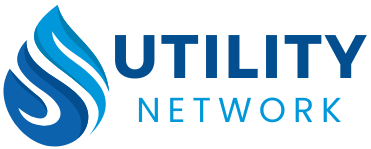Start Water Connection Services
Starting a water connection service involves the process of providing access to a reliable water supply for residential, commercial, or industrial properties. This process typically includes several steps, from application submission to the installation of necessary infrastructure. Here’s a detailed overview of how to start water connection services:
Application Process
- Submit Application: The first step is to apply for a new water connection with the local water utility company or municipal authority. Applications can often be submitted online, in person, or by mail.
- Required Documentation:
- Proof of identity (e.g., national ID, passport).
- Proof of ownership or rental agreement for the property.
- Building permits or occupancy certificates (especially for new constructions).
- Site layout or property plan showing the intended water connection.

Site Inspection
- Utility Site Visit: After submitting the application, a representative from the water utility conducts a site inspection to:
- Assess the feasibility of connecting the property to the existing water supply network.
- Identify the nearest water main and evaluate the condition of existing infrastructure.
- Determine the necessary equipment and materials for the connection.
Cost Estimation
- Connection Fees: Following the site inspection, the utility company provides an estimate of connection costs, which may include:
- Charges for installing pipes, meters, and necessary infrastructure.
- Fees for extending the water supply line if the property is not close to the main line.
- Security Deposit: Some utilities may require a security deposit based on estimated water usage, which is often refundable.
Technical Planning
- Designing the Water Supply Network: The utility company prepares a technical design plan, which includes:
- The layout of the water distribution lines from the main supply to the property.
- The placement of the water meter and any required backflow prevention devices.
- Compliance with local building and plumbing codes.
Installation of Infrastructure
- Water Main Installation: If the property requires a new connection to the main water line, the utility company installs the necessary piping and infrastructure.
- Meter Installation: A water meter is installed at the property boundary to measure water usage for billing purposes.
- Internal Plumbing: Property owners are responsible for connecting their internal plumbing to the meter and ensuring that all systems meet local plumbing codes. A licensed plumber typically handles this work.
Safety Checks and Compliance
- Water Quality Testing: The utility company may conduct tests to ensure the water supply meets safety and quality standards before activation.
- Regulatory Compliance: The installation must comply with local regulations and standards for water supply systems, including backflow prevention and metering requirements.
- Inspection: A final inspection is often required to ensure everything is installed correctly and safely.
Activation of Water Connection
- Once all inspections are completed and the infrastructure is in place, the utility company activates the water connection.
- User Guidelines: Customers receive guidelines on how to use the water supply responsibly and how to report any issues.
Billing and Payment
- Metered Billing: Customers are billed based on water consumption, recorded by the meter. Bills are typically sent monthly or quarterly.
- Payment Options: Utilities offer various payment options, including:
- Online payments through mobile apps or websites.
- Bank transfers or direct debit arrangements.
- In-person payments at designated centers.
Ongoing Maintenance and Support
- Utility Maintenance: The water utility is responsible for maintaining the water supply infrastructure up to the meter. This includes regular inspections, repairs, and upgrades to ensure consistent service.
- Customer Support: Utilities provide customer service for billing inquiries, service interruptions, and emergency issues such as leaks or water quality concerns.
Special Considerations
- Rural Connections: For properties located in rural areas, the connection process may involve additional infrastructure and longer timelines due to the distance from the main water supply.
- Water Conservation Programs: Many utilities offer programs to promote water conservation and efficiency, including rebates for low-flow fixtures or irrigation systems.
- Temporary Water Connections: Temporary connections may be available for construction sites or special events that require water supply.
Disconnection and Reconnection
- Disconnection Process: If a customer no longer requires water service, they can request disconnection. Utilities may also disconnect service for non-payment or violations of service agreements.
- Reconnection: Customers can apply for reconnection if the service was disconnected, which may involve paying outstanding balances and reconnection fees.
Starting a water connection service can vary in complexity based on local regulations, the size of the property, and the existing infrastructure. By following these steps, property owners can ensure a smooth and efficient process for accessing a reliable water supply.
If you need specific information regarding water connection services in a certain region or from a particular provider, let me know!

